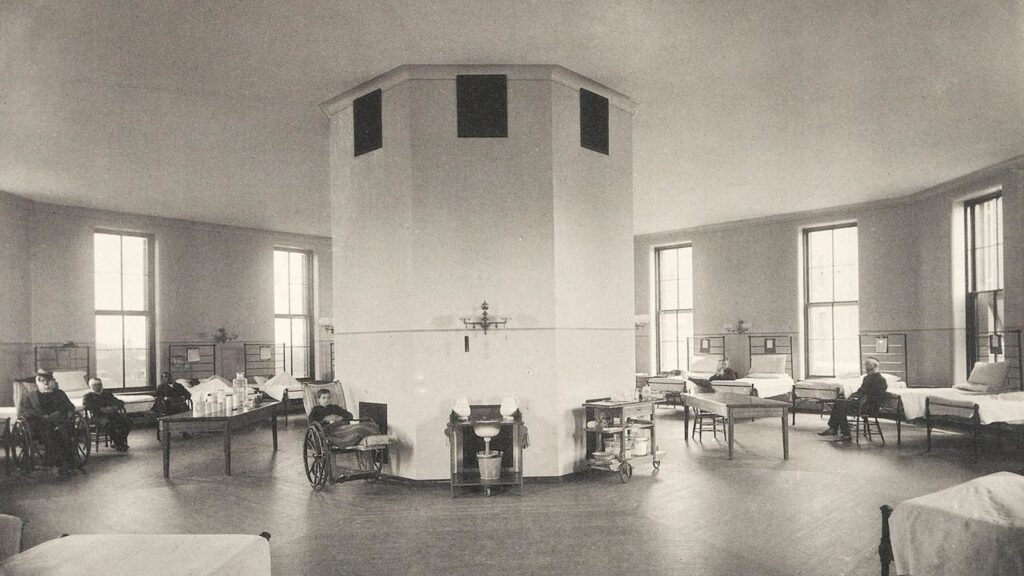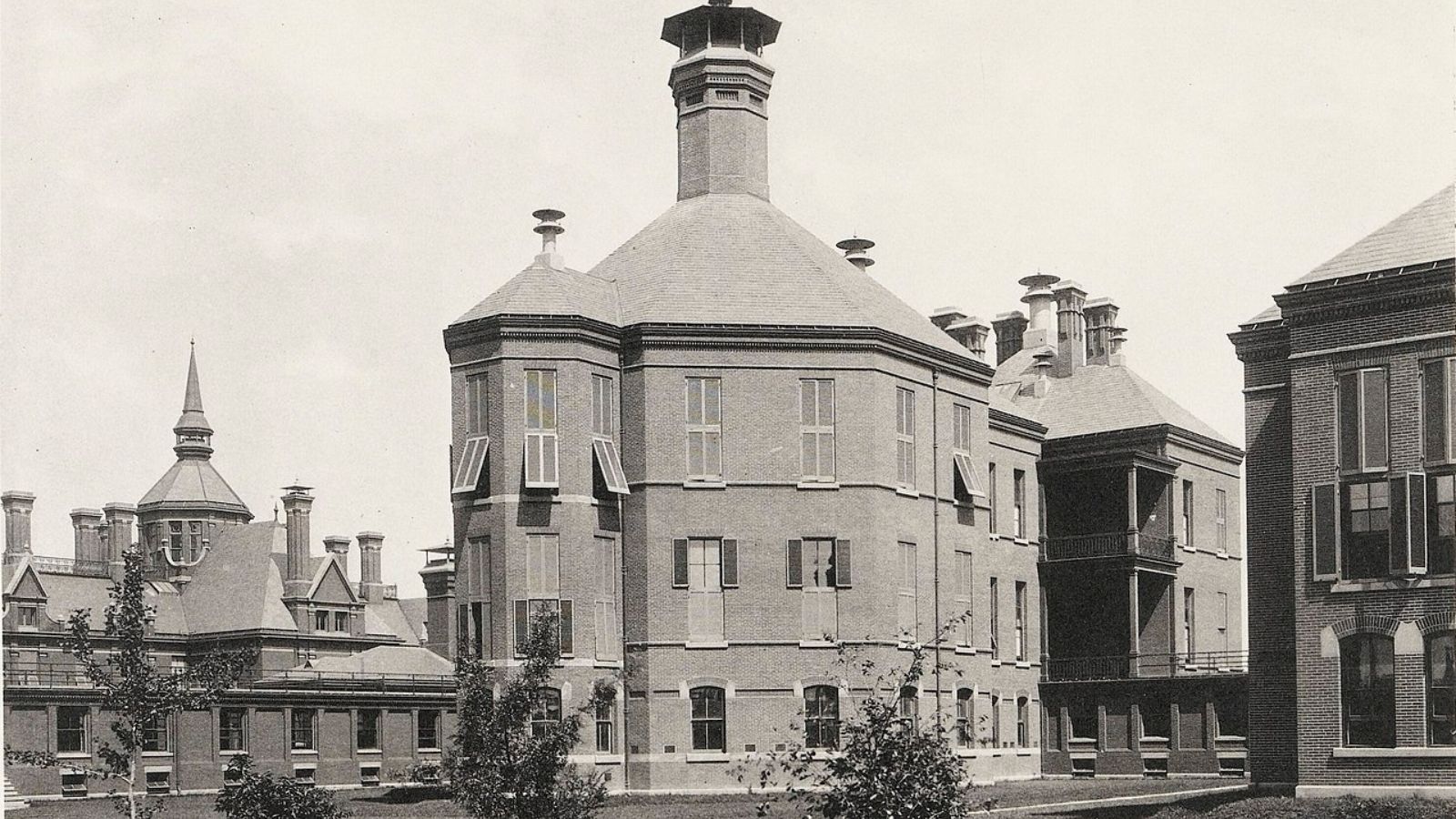Doctors doing their “rounds” is a common practice in many hospitals. But did you know this practice traces its origins to the iconic Johns Hopkins Hospital in Baltimore, Maryland?
Founded in 1889, Johns Hopkins Hospital was unique in many ways, including its distinct octagonal patient ward. Dr. William Osler, one of the founding professors and the hospital’s first physician-in-chief, pioneered a revolutionary approach to patient care and medical education here. Believing true knowledge comes from hands-on learning, he created the first residency program for specialty training of physicians. His emphasis on bedside learning transformed medical education forever.

The octagonal ward where the doctors conducted their rounds
Accompanied by a team of physicians, Dr. Osler would go from bed to bed in the octagonal ward, engaging with patients directly, discussing symptoms, treatments with a humane touch. This routine activity was known as “ward rounds,” where physicians learnt by examining and caring for patients collectively in the circular ward.
Dr. Osler’s ward rounds marked a groundbreaking shift towards experiential learning, where observation and interaction with patients deepened a doctor’s understanding of medicine. This practice spread beyond Johns Hopkins and became a global standard in medical training and patient care.
Today, “doing rounds” remains an integral part of hospital life, thanks to the vision of Dr. William Osler and his patient-centric approach to healthcare.



